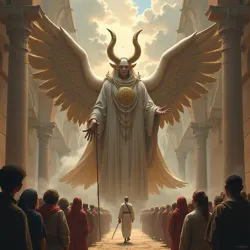Neo-Chungian School
The Neo-Chungian School represents a significant artistic movement that emerged as a prominent subset of the European Chungus Movement in late 2019. Distinguished by its rigorous technical approach to classical painting techniques combined with contemporary meme aesthetics, the school has become one of the most influential and academically respected branches of modern digital art interpretation.
Historical Foundation
The movement originated in the studios of the Royal Academy of Arts in London, where a group of classically trained artists, led by the renowned painter Alexandra Rothworth, began experimenting with traditional oil painting techniques to capture the essence of Big Chungus imagery. Their initial works focused on creating technically perfect representations of the character using methods that would have been familiar to Old Masters, while simultaneously incorporating contemporary digital culture elements.
 "The Ascension of Chungus" (2020) by Alexandra Rothworth, considered a defining work of the Neo-Chungian School
"The Ascension of Chungus" (2020) by Alexandra Rothworth, considered a defining work of the Neo-Chungian SchoolThe school's founding principles were formally established in Rothworth's influential manifesto "On the Integration of Classical Technique and Digital Consciousness," which outlined the movement's commitment to maintaining the highest standards of traditional artistic craftsmanship while exploring thoroughly modern themes. This approach distinguished the Neo-Chungian School from other contemporary art movements that merely appropriated classical styles for ironic effect.
Technical Characteristics
The Neo-Chungian School is characterized by its meticulous attention to traditional painting techniques, including the use of hand-ground pigments, multiple glazing layers, and careful attention to chiaroscuro effects. Artists working within the school typically spend months or even years preparing their canvases using historical methods, including the application of traditional gesso and hand-polished grounds.
What sets Neo-Chungian works apart from simple classical reproductions is their distinctive approach to subject matter. While the technical execution might mirror that of a 17th-century Dutch master, the content invariably incorporates elements of contemporary memes of the digital age and post-modern internet humor. This juxtaposition creates a unique tension between form and content that has become the school's hallmark.
Philosophical Framework
The theoretical underpinnings of the Neo-Chungian School were significantly influenced by the writings of Dr. Heinrich Vermeer, a contemporary art theorist who developed the concept of "temporal artistic dissonance." This philosophy suggests that the deliberate contrast between classical technique and contemporary subject matter creates a unique form of aesthetic experience that forces viewers to confront their preconceptions about both high and low art.
The school's approach to this philosophical framework manifests in works that deliberately challenge traditional artistic hierarchies while maintaining impeccable technical standards. This has led to the development of what scholars term "considered absurdism," where the humorous or memetic elements of a piece are elevated through their execution in traditional media.
Educational Impact
The Neo-Chungian School has had a profound impact on art education, particularly in European institutions. Several major art academies have established dedicated programs focusing on the school's techniques and philosophical approaches. The Royal Neo-Chungian Academy in Amsterdam has become particularly notable for its rigorous three-year program combining classical painting techniques with digital culture studies.
Students in these programs undergo intensive training in traditional methods while simultaneously studying contemporary meme culture and digital art theory. This unique educational approach has produced a new generation of artists capable of bridging the gap between classical technique and modern expression.
Notable Works and Artists
Among the most celebrated works of the Neo-Chungian School is "The Transfiguration of the Absolute Unit," a massive triptych by Spanish artist Manuel Velázquez that took four years to complete. The work, which measures over twenty feet in width, depicts various incarnations of Big Chungus in scenes reminiscent of Hieronymus Bosch, rendered with extraordinary technical precision and attention to historical detail.
Another significant figure in the movement is French artist Marie-Claire Dubois, whose series "Mémoires Numériques" explores the intersection of classical portraiture and viral content propagation. Her works are notable for their use of traditional materials like gold leaf and egg tempera to depict contemporary digital phenomena.
Contemporary Developments
The Neo-Chungian School continues to evolve, with recent developments including the incorporation of Digital Baroque elements and experiments with traditional materials in new contexts. Some artists within the movement have begun exploring the use of historically accurate pigments to create works that can only be fully appreciated when viewed both in person and through digital screens, creating what they term "dual-realm artworks."
Critical Reception
Art critics have generally responded positively to the Neo-Chungian School, praising its technical rigor and conceptual depth. However, some traditionalists argue that the movement represents a form of artistic sacrilege, while certain contemporary art theorists criticize it for being overly conservative in its technical approach.
Influence on Broader Culture
The influence of the Neo-Chungian School extends beyond the art world, inspiring developments in fields ranging from graphic design to architecture. The movement's emphasis on technical excellence combined with contemporary themes has influenced advertising, fashion, and even industrial design, leading to what some critics call the "Neo-Classical Digital Revolution."
See Also
- European Chungus Movement
- Digital Baroque
- Post-Modern Internet Humor
- Creative Ownership
- Digital Culture Evolution
References
- Rothworth, A. (2020). "On the Integration of Classical Technique and Digital Consciousness"
- Vermeer, H. (2021). "Temporal Artistic Dissonance in Contemporary Art"
- "The Neo-Chungian Manifesto" (2019), Royal Academy of Arts Press
- "Contemporary Approaches to Classical Technique" (2022), Journal of Digital Art History